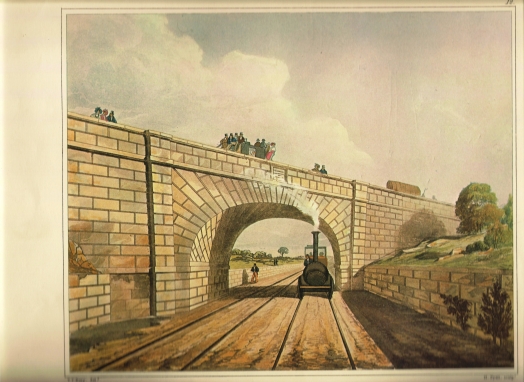Rainhill Bridge
Resource Type: Image | Posted on 3rd May 2011 by Jenny Porter
One of the Bury prints, painted by Thomas Talbot Bury, who was commissioned to paint depictions of the Liverpool and Manchester Railway. This one shows a train passing under the George Stephenson Skew Bridge at Rainhill, so called because of the unusual angle at which it passes over the railway, the first railway bridge to do so. The people on the Bridge watch with interest, while a horse-drawn cart can be seen on the right of the picture. The Bridge was built to carry the Railway under the Liverpool and Warrington turnpike. The road crosses the railway line at an angle of 34 degrees, while the arch spans 54 feet - compared with 30 feet as the breadth of the railway. Rainhill, near St. Helens, was the scene of the famous Rainhill Trials in 1829, where the Rocket was chosen as the model for use on the Liverpool and Manchester Railway. Unfortunately, it was also at the centre of a notorious mass murder case in 1892, when the bodies of Marie Deeming and her four children were found in Dinham Villa in the village, having been murdered by Marie’s husband and the children’s father, Frederick Bailey Deeming. At the time of the discovery, Deeming was already wanted in connection with the murder of his second wife, Emily Mather, whom he had married in Rainhill and then murdered in Melbourne within months of the earlier killings, and was subsequently hanged in Melbourne
Categorised under: Landmarks, Landscapes & Locomotives

Comments